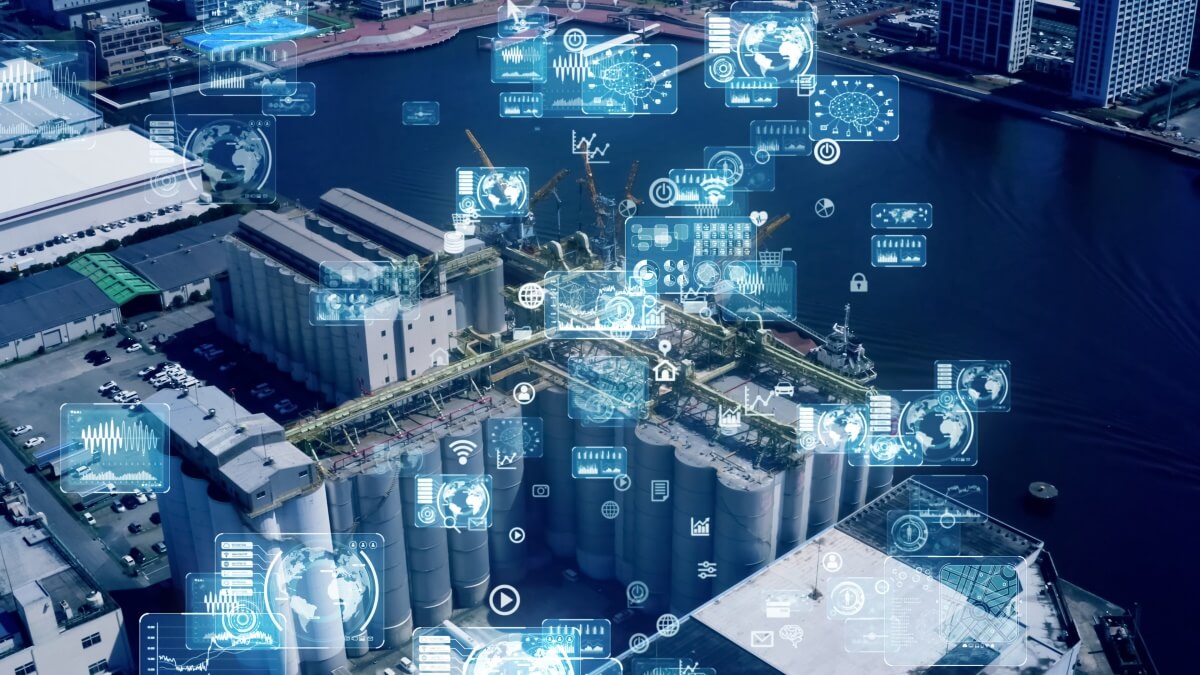Edge AI is an amalgamation of Edge computing and artificial intelligence (AI). Edge AI harnesses the features and benefits of both Edge computing and AI, yielding impressive results. For example, Edge AI offers improved bandwidth efficacy, reduced latency, and decreased size and weight compared to cloud-based AI.
Additionally, Edge AI’s offline capabilities allow it to offer services to locations with intermittent connection or network failures.
This aids diversity and inclusion as not needing to depend on costly cloud services or the availability of communication networks broadens AI’s access to populations worldwide. This grants more people AI access and empowers a global pool of innovators.
To understand how Edge AI got to where it is today, it’s important to break down each technology it utilizes individually.
A summary of Edge computing
Traditionally, data needs to be sent to cloud data centers for processing. This can involve sending massive amounts of data over long distances.
Over the years, an unprecedented number of connected devices have accumulated tremendous amounts of data, putting a massive strain on cloud data centers. This leads to bandwidth and latency issues.
With Edge computing, on the other hand, processing takes place at the site where the data is initially generated. This reduces the volume of data sent to a centralized server or the cloud.
In a nutshell, Edge computing is the practice of processing client data close to the data source. It brings enterprise applications, data storage, and computing resources closer to where people require the information.
This can sometimes involve processing information on users’ Edge-enabled devices, including laptops and IoT devices.
Reducing long-distance communication between the client and the server comes with many benefits. For example:
- Localized data processing allows businesses to process data in real-time. In situations where the loss of a millisecond has consequences, such as in manufacturing, Edge computing becomes critical thanks to its low latency.
- Keeping data local with Edge computing helps to reduce a network’s data stream volume, eliminating the potential for bottlenecks.
- Because Edge computing doesn’t need an internet connection to process data or to come to a decision, it’s a convenient solution in use cases where poor connectivity and intermittent connection are a problem.
- Edge computing offers security advantages. As data is particularly vulnerable to hacking when traveling between locations, Edge computing is considered more secure as there is no need for data to move through the network.
As you can see, Edge computing comes with several benefits that position it as a fantastic computing option for modern businesses. Businesses now recognize the advantages of using the cloud when it’s the best option and using methods like Edge computing when that makes more sense.
AI briefly explained
AI is a field that combines computer science with robust datasets to facilitate decision-making.
AI algorithms create systems that expertly make classifications or predictions based on input data.
The goal here is to leverage computers to mimic the decision-making and problem-solving capabilities of the human mind. Usually, AI demonstrates one or more of the following behaviors associated with human intelligence: learning, planning, problem-solving, reasoning, perception, motion, manipulation, creativity, and even social intelligence.
AI can also iteratively improve itself based on the information it collects. AI management platforms like Xailient’s Orchestrait are also immensely beneficial for improving the AI onboard Smart Video Doorbells and other IoT devices and keeping them up to date.
Thanks to AI, tasks that typically require human intelligence like speech recognition, visual perception, and word translation are now tasks that computer programs can undertake.
AI also incorporates the sub-fields of machine learning, deep learning, and computer vision, which are important to note as they are often mentioned in conjunction with AI.
Let’s expand on these 3 main areas:
1. Machine learning finds hidden insights
Machine learning uses neural networks to find hidden insights from data. It does this without being told what to look for or what decisions to make. It’s a common way for programs to detect patterns and expand their intelligence over time.
2. Deep learning uses large data sets
Deep learning uses large neural networks (NNs) with many layers. NNs process vast amounts of data and complex patterns, taking full advantage of their size.
Deep learning is similar to machine learning but uses more layers and larger data sets.
3. Computer vision AI understands pictures and videos
Computer vision uses deep learning and pattern recognition to understand a video or picture. With computer vision, a machine can capture photos and videos in real-time to interpret its surroundings.
AI is a valuable business asset
Although all this talk about replicating human intelligence can conjure up images of high-functioning robots taking over the planet, AI isn’t intended to replace humans. Instead, its purpose is to tremendously enhance human capabilities, making it a brilliant business asset.

For instance, AI is being used to optimize businesses through things like speech recognition that provides more accessibility around texting and customer service virtual agents (think messaging bots and virtual assistants).
AI is also helping businesses through recommendation engines that use past consumer data to suggest relevant content to their users and automated stock trading that makes thousands of trades a day without human intervention.
Edge AI combines Edge computing with AI
For the most part, AI algorithms today are run at large cloud data centers, but to use this intelligence at Edge locations, data must be sent to the cloud for analysis and then transmitted back to the Edge (to a device out in the field).
The problem with this approach to AI is that it consumes a significant amount of energy. It can also result in transmission delays and security vulnerabilities.
As mentioned earlier, the massive amounts of data generated today are causing cloud data centers to become increasingly overburdened. This also negatively impacts AI by contributing to its energy, latency, and security problems.
Because of this, there is a critical need to push the frontiers of AI to the network’s edge.
This is where Edge AI enters the scene.
While Edge computing brings data processing closer to the edge of the network, creating a cascade of benefits for a wide variety of applications, AI promises the ability to make fast, accurate decisions based on complex data. Edge AI harnesses these benefits while also creating new opportunities due to this combination of technologies.
In Edge AI systems, machine learning algorithms can run on existing CPUs or even less capable microcontrollers (MCUs).
Essentially, the combination of Edge computing and AI allows artificial intelligence to run machine learning tasks on connected devices at Edge locations.
Edge AI is smaller in size, local, and more accessible to everyday users and has come about thanks to three recent innovations. They are:
1. The maturation of neural networks (NNs)
NNs and AI infrastructure have matured to allow for generalized machine learning. As a result, organizations are mastering how to successfully train and deploy these AI models in production at the Edge.
2. The development of compute infrastructure
Robust distributed computing power is essential for running AI at the Edge. Recent advances in GPUs (graphics processing units) have been adapted to execute neural networks, as GPUs help to improve compute power in high-performance, complex computing environments.
3. The widespread adoption of IoT devices
The IoT has helped fuel the explosion of big data. Now, users can suddenly collect data from their smart cameras, robots, industrial sensors, and more in every aspect of a business. Thanks to the IoT, the data and devices necessary to deploy AI models at the Edge are readily available.
AI technology has become an integral part of many industries, including microelectronics, healthcare, energy, and finance. As a result, AI is driving a multi-trillion-dollar global market while redefining how people work, connect, create, live, and tackle big societal problems such as predicting the severity of climate-driven disasters like hurricanes and wildfires.
Edge AI has rapidly become an indispensable technology.
Edge AI drives innovation and improves lives
Thanks to recent innovations, Edge computing has paved the way for new AI opportunities that were previously unimaginable. Today, almost all businesses have job functions that stand to benefit from the adoption of Edge AI.
Edge AI can improve people’s lives at home and work. And, perhaps most excitingly, it also promises to make intelligence available to a more diverse group of users and innovators alike.

